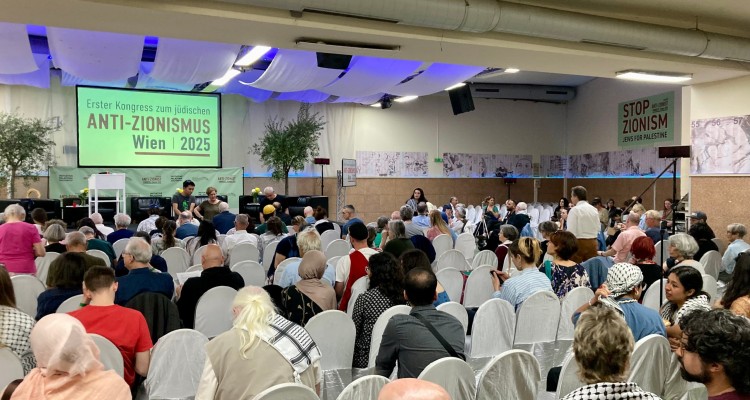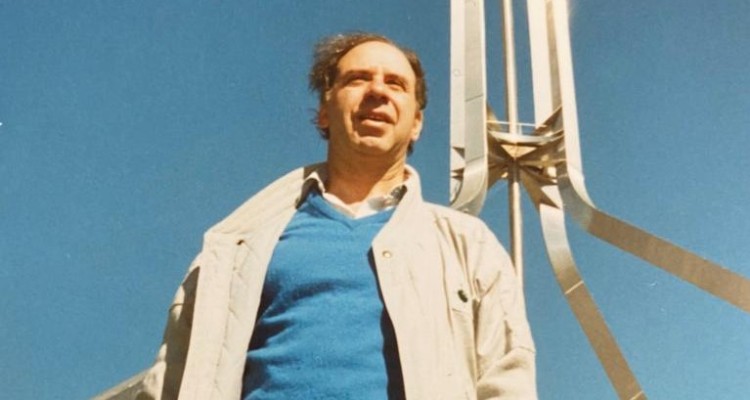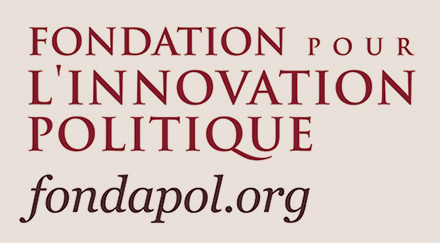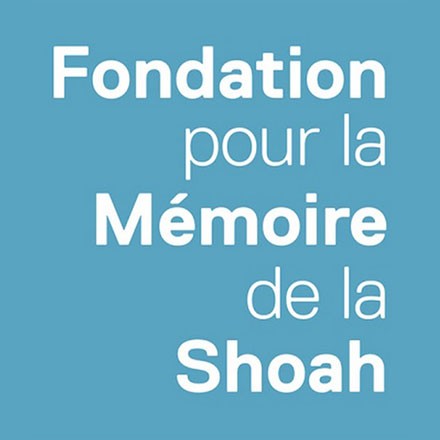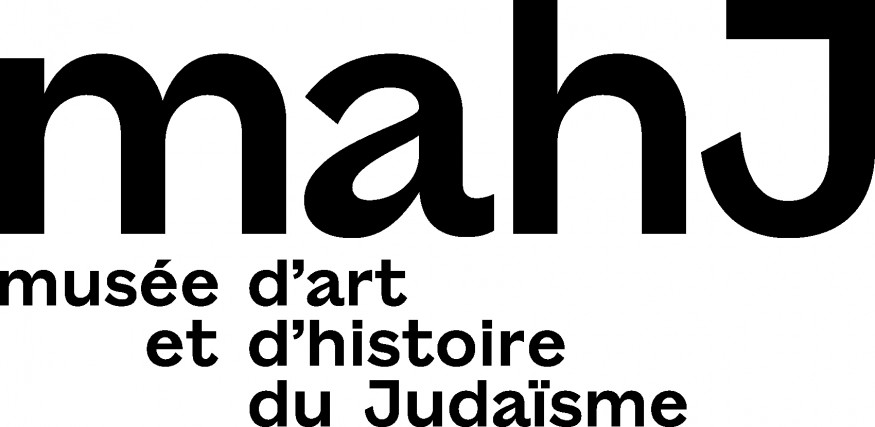Last year, a collective of Viennese artists and activists rekindled the debate over the statue of Karl Lueger, the anti-Semitic mayor of the Christian Social Party in the Austrian capital between 1897 and 1910, whom Hitler considered to be one of the greatest “German mayors of all time”. Liam Hoare revisits for K. this memorial dispute, which still agitates Vienna’s political life to this very day.
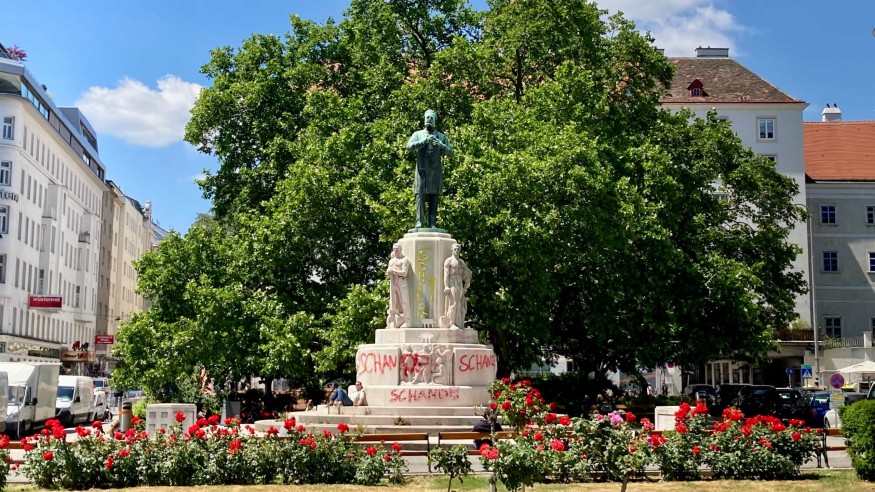
One year ago, in June 2020, the word Schande, shame, first appeared in spray paint upon the pedestal of Vienna’s monument to Karl Lueger. The founder of the Christian Social Party (CS) (the electoral vehicle for the Catholic camp in Austria from 1893 until 1934) and mayor of Vienna from 1897 until his death in 1910 was honored in 1926 with a monument funded by his friends and sympathizers. Originally, they had intended to put the statue up in front of city hall on a square then named Dr.Karl-Lueger-Platz. Instead, the Social Democratic-controlled city offered them a spot on the eastern side of the Ringstrasse near Café Prückel. The name Dr.-Karl-Lueger-Platz was transferred to the new square; the old one was renamed Rathausplatz.
Vigil of disgrace (“Schandwache”) in front of the statue of Karl Lueger
The finished monument is one of the largest in Vienna. At its summit stands Lueger, four meters tall, cast in bronze, staring out eastward across the Ring as if addressing an expectant crowd. His feet are placed upon an enormous octagonal stone pedestal which is layered like a wedding cake. Its sides are engraved with reliefs depicting his various achievements: the municipalization of the gas and electricity supplies, the preservation of the forests surrounding Vienna, entitlements for widows and orphans, and charitable housing for the destitute. Its scale, position, and propagandistic quality all stand to burnish the cult of Lueger.
After the monument was initially defaced, the city scrubbed the word Schande from the pedestal only for it to reappear days later. Over the course of the next few months, in red, yellow, green, and pink, the word appeared and appeared again. The monument became a palimpsest. The Austrian novelist Robert Musil once wrote “the remarkable thing about monuments is that one does not notice them. There is nothing in this world as invisible as a monument.” Treated as a canvas,the monument became visible again to those who had previously been able to ignore it. Once more, it became a site of conflict in Vienna over history, memory, and the question of who should be honored in the public space.
“In the sense that it was defiled, smeared, the monument was transformed from something sacrosanct into something fallible,” the Viennese artist Simon Nagy wrote in a recent contribution to the German journal Texte zur Kunst, “a place where people could stop to consider and question the markings” that had appeared upon the monument. Nagy was among those who, motivated by a desire to preserve the graffiti, to preserve the shame, established a Schandwache, a “vigil of disgrace” as the artist Eduard Freudmann has termed it, at the monument in October 2020. “We stand here,” their manifesto read, “in order to stand guard over the graffiti that brands the monument to Lueger as what it is: a disgrace.”
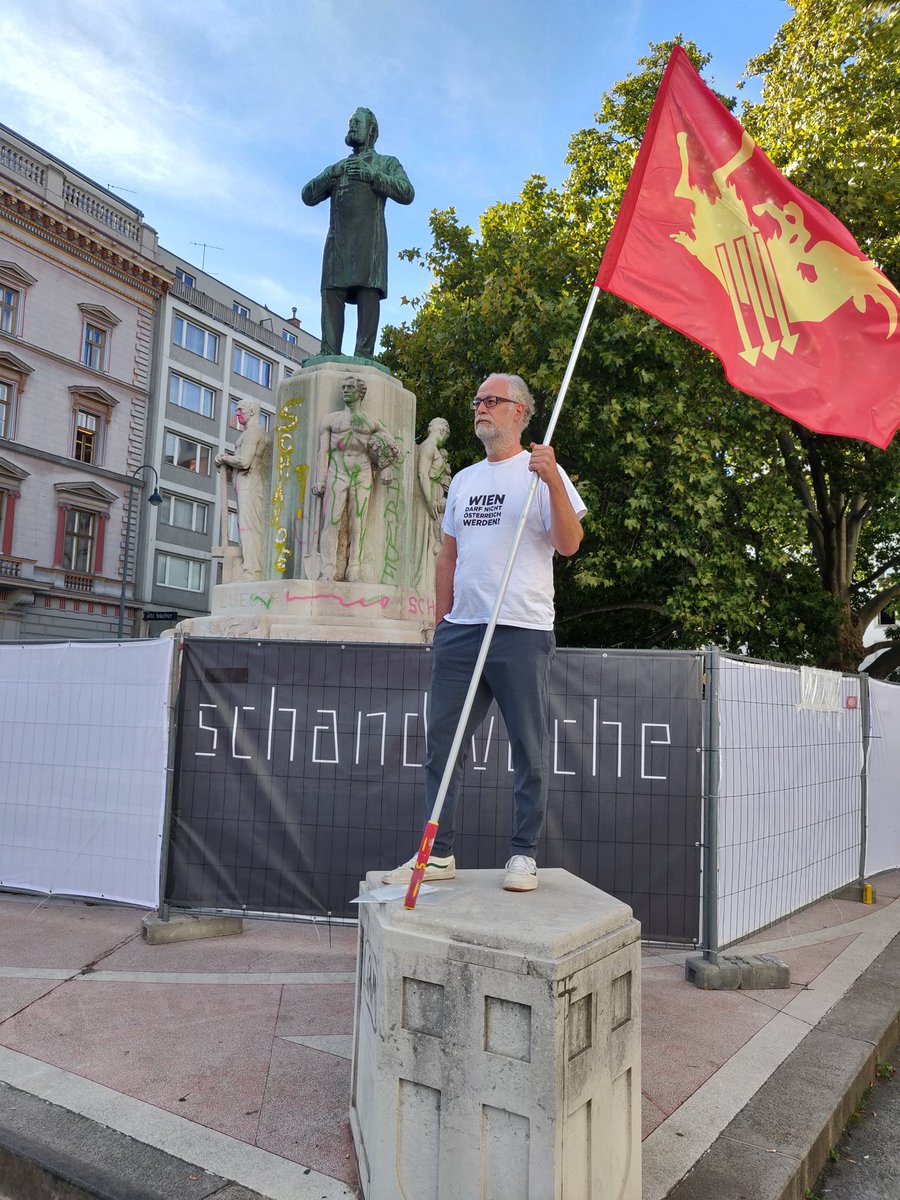
The Schandwache drew not only artists but a kaleidoscopic variety of supporters, principally but not exclusively from the activist left. Representatives of the Left Party, Socialist Youth Vienna, Hashomer Hatzair, the Austrian Union of Jewish Students, and the Austrian Muslim Youth all stood watch over the monument at one time or another in early October. Their case was that the word Schande said what the monument did not: that Lueger was not the paternalistic founder of modern Vienna, but rather someone who “built his political success upon a form of rabid antisemitism.” The monument “falsifie[d] history in extolling Lueger as a benevolent figure,” the collective argued, occluding the Jew-baiting that secured him a position of power.
Who was Karl Lueger?
What we think about when we think about Lueger is too often colored by sources, like the monument, which are unreliable. “Even when Lueger, leader of the antisemitic party, became mayor of the city, nothing changed in private social relationships,” Stefan Zweig writes in his memoir The World of Yesterday. “I personally must confess that I never felt the slightest coldness or scorn for me as a Jew either in school, at the university, or in literature.” Lueger, Zweig recalls, “even when speaking with his utmost ferocity [. . .] never stepped beyond the bounds of decency [and]maintained a certain dignity towards his opponents, and his official antisemitism never kept him from helping his former Jewish friends and showing them goodwill.”
The World of Yesterday is a dazzling, majestic literary work, Zweig’s elegy for European liberalism, dead at the hands of war, nationalism, and fascism. But it must be handled with great care. It is inherently nostalgic, a look back at a world destroyed, written both in exile and at the end of the author’s life. Zweig’s view of Habsburg Vienna is circumscribed by virtue of the cosseted milieu in which he moved, namely that of the artistic and intellectual bourgeoisie. And the book’s politics are those of someone who thought that mass participation had destroyed the benevolent, paternalistic liberalism that had created, for all its faults, a ‘world of security’.

The antisemitism of Lueger and fin-de-siècle Vienna and its connection with Adolf Hitler’s ideological development are now more widely understood. Thanks to the work of historians like Shlomo Avineri, for example, it is now better known that Theodor Herzl was not inspired to write Der Judenstaat because he was a witness to the cashiering and imprisonment of Alfred Dreyfus, as if the work were the result of some a-ha moment. Rather, “it was his analysis of the deteriorating Austrian political situation,” the social and political conditions in which Herzl lived and worked in Vienna in 1897, the year Lueger assumed power, Avineri finds, “that sparked the dramatic turn in Herzl’s engagement with the Jewish issue.”
Vienna’s Jew-hatred at that time “was not a vestige of medieval Church superstitions,” writes Avineri. It was antisemitism, the hatred of Jews based on notions of race and nation, and it was “anchored in the very fabric of modern society as more and more decisions were handed over to the people.” Even if Lueger himself was not an antisemite—and the historian Florian Wenninger tells me he suspects he was not—it was certainly the case that through antisemitic rabble-rousing, anti-Jewish agitation, and a party platform steeped in nationalism and xenophobia, as well as Germanic and Catholic supremacism, Lueger rode a wave of hatred and hostility among the Viennese lower-middle class to reach the highest office in city hall.
It was Lueger who, for instance, campaigned against the “Judaization” of the University of Vienna, which Lueger decreed to be a matter of “Christian” honor, and for a numerus clausus in order to protect “German-Austrians” against the influx of what he termed Hungarians and Galicians. Rhetorically, Lueger often couched his antisemitism as a defense of Christianity, but his underlying ideology was evidently grounded in ideas of ethnicity or nationhood, of Volkstum and the Völkisch movement. “From the 1870s on, there is no real difference to be drawn between economic, religious, and racial antisemitism, and the CS and Lueger clearly defined Judaism, the other, in a racist way,” Wenninger tells me.
Hitler resided in this crucible, in the heightened antisemitic atmosphere of Lueger’s Vienna, and here his political ideology began to take form. Lueger, Hitler later wrote in Mein Kampf, “was one of the most immense German mayors of all time.” Lueger and the CS were not Nazis, and the Catholics and German nationalists constituted separate political camps, divided by the question of Austrian nationhood. But it is true in Vienna Hitler “absorbed pan-Germanism, the concept of the Aryan master race, antisemitism, and anti-Slavism,” Avineri concludes. The Schandwache collective argued Lueger was a “model” for Hitler. Wenninger tells me Lueger was the forerunner for a kind of “commonly-shared antisemitism between German nationalists—later National Socialists—and the CS.”
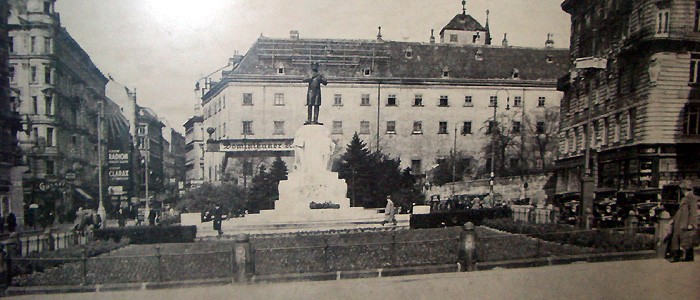
Re-conception of the monument
Faced with the man and monument, the only solution for the Schandwache collective as well as other historians, planners, and activists engaged in this debate is a radical re-conception of the monument and the square on which it stands. In May of this year, an expert commission organized by the protest platform #aufstehn published its recommendations for what such an Umgestaltung might look like. First, Dr.-Karl-Lueger-Platz should be transformed into a “place of reflection,” one that grapples with the darker aspects of Viennese history, and in particular the issue of antisemitism. Second, the figure of Lueger should be removed from its pedestal. Third, Dr.-Karl-Lueger-Platz should be renamed. Fourth, the redesign of the monument and square should be the subject of an open and fair competition.
“That Lueger instrumentalized antisemitism in order to become mayor is what makes me say, explicitly, that the statue has to be taken down from its pedestal and that there is no way for it to be contextualized and, considering the spatial dimensions of the statue and the square, no possibility that something could be built next to it that could compete with it,” the architect and city planner Gabu Heindl, member of the #aufstehn commission, tells me. “I think it would be problematic to remove him from the pedestal only to situate him somewhere else on the square, for it could transform him into a fallen figure and make it all too easy for the far-right to continue venerating him there. A good solution could be to put the statue in a museum while keeping the pedestal,” she adds.
#aufstehn’s recommendations were significant because of the people who were involved in making them, in particular the historian Oliver Rathkolb, who is seen as being close to Vienna’s ruling Social Democratic Party (SPÖ) and played a very prominent role in a previous attempt to contextualize the monument. There is also precedent for such an interventionist reconfiguration of a city monument, for in 2019, a tribute to the Nazi poet Josef Weinheber—a bust upon a pedestal located on Schillerplatz across from the University of Fine Arts—was boldly and successfully reconceptualized by among others Freudmann and Heindl, who created a trench around the pedestal’s base, exposing its oversized concrete foundations.

“The goal of our artistic intervention at the Weinheber monument, which included an explanatory plaque, was to show that the public space is a battleground over who should be honored and why it was important to the city to protect this monument,” Heindl told me. Such would be the goal of a new intervention at the Lueger monument. “We support a fundamental reconceptualization of the monument that makes it unmistakably clear that Lueger does not deserve to be honored,” Schandwache’s manifesto states. By taking up the cause of such a total and complete reconfiguration, Schandwache reignited the debate over one of the largest and most prominent and politically-charged monuments in the city, one that has been raging now for the better part of 30 years.
Debates on street names in Vienna
In April 2012, Vienna’s city government—at that time a coalition between the Social Democratic Party and the Greens—voted to remove Karl Lueger’s name from a section of the Ringstrasse. Inspired by Georges-Eugène Haussmann’s renovation of Paris, in the mid-nineteenth century Franz Josef I ordered that the medieval walls encasing Vienna’s old city be torn down and its central and outer districts brought together by way of a grand boulevard. Built in a mish-mash of architectural styles ranging from classical to gothic, Vienna’s parliament, city hall, and opera house all face the ‘Ring,’ while residential buildings like the palais Ephrussi and Todesco are a testament to the emergence of an assimilated Jewish bourgeoise contemporary to and made possible by the Ring’s construction.
One particular stretch—running from city hall and the imperial theater at one end to the university and Café Landtmann (Sigmund Freud’s haunt of choice) at the other—had been named for Lueger. By the time it was renamed to Universitätsring on June 5, 2012, the debate about the street’s name had been ongoing for twenty years—since the first time the Greens, then in opposition, had proposed a motion on the city council to have Lueger’s name removed. Around then, in 2000, the university also held its own internal debate about the Ring’s name, one which failed to come to a firm conclusion. One reason for the deadlock was the committee selected to debate the issues could not agree on a possible new name for the street.
The impetus for a closer examination of Lueger’s association with the Ring came in the form of an intervention in the first decade of the twenty-first century from Eric Kandel, winner of the Nobel Prize in Physiology or Medicine in 2000. Kandel was born in Vienna on November 7, 1929, and when he was nine, his family fled the city for safe harbor in the United States following the Anschluss of March 1938 and Kristallnacht eight months later. After winning his Nobel, he adopted the renaming of the Ring as a cause célèbre. He explained his reasoning in an interview in 2008, saying that the university, “a symbol for the freedom of speech and thought,” should not be associated with “a founder of modern antisemitism and an instructor for Adolf Hitler.”
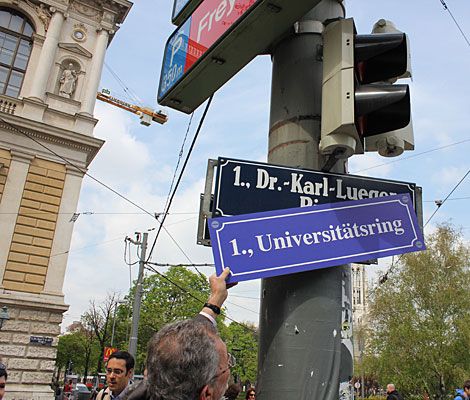
The renaming of Dr.-Karl-Lueger-Ring took place in the context of a broader conversation about Vienna’s street names and the question of who the city chose the honor in this way. In 2011, the city established a commission consisting of four scholars of contemporary history tasked with examining those names and isolating problematic examples. In July 2013, the commission concluded that of the 4,379 streets in Vienna named for actual people, 159 demanded a more intense and critical discussion about what should be done about them. These included authors, singers, scientists, and athletes, all of whom were either Nazi sympathizers, members of the NSDAP, or profiteers from the Nazi system.
In the years following the report’s publication, some Viennese streets were renamed. Richard-Kuhn-Weg, a back alley in one of Vienna’s outer districts, named for the biochemist Richard Kuhn who, during the Nazi period, was close to the regime and denounced his Jewish colleagues, was renamed Stadt-des-Kindes-Weg in December 2018. In general, however, the city’s then-Culture Secretary Andreas Mailath-Pokorny opted for a more measured policy of contextualization whereby streets with problematic names would receive additional plaques below the street sign explaining, first, for whom the street was named, and second, that person’s connection to Nazism, racism, and/or antisemitism.
Political War over the Lueger Monument
This street name debate, both about the city’s streets in general and the Dr.-Karl-Lueger-Ring specifically, created the conditions for a separate but related discussion about Vienna’s monument to Lueger and the surrounding square, yet both can be said to have escaped this dispute largely unscathed. In 2009, as the calls to do something about the Ring grew louder, the University of Applied Arts launched a competition to conceive of a new artistic solution for the Lueger monument. The winning proposal from the artist Klemens Wihlidal, revealed in May 2010, would have seen the statue and part of the base of the monument tilted to the right at a 3.5-degree angle, disrupting the monument’s verticality and thus the myth of Lueger itself.

Without the institutional support of the city, however, the proposal was dead on arrival, though the city was far from the only obstacle at that time. Any alteration to the monument would also have needed the support of the Federal Monuments Office, whose responsibility it is to uphold and protect listed monuments like Lueger’s, and the chair of the district council of Vienna’s first district in which the monument is located. The first district, the Innere Stadt, has long been a stronghold of the conservative People’s Party, the ÖVP, and was at the time chaired by Ursula Stenzel (who crossed over to the far-right Freedom Party (FPÖ) in 2015 and attended and addressed an identitarian demonstration at the Lueger monument in 2019). Stenzel, rest assured, would never have countenanced any alteration to the monument which questioned the former mayor’s historical significance or heroic standing. Stenzel was succeeded in 2015 by Markus Figl.
Indeed, whether the matter at hand was the renaming of the Ring or the contextualization of the Lueger monument, the ÖVP proved to be a major impediment to change. Lueger was the father of the contemporary ÖVP, the postwar successor to the CS, and to give him up would have been akin to slaughtering a sacred cow. ÖVP politicians anconservative historianlike Franz Schausberger thus have tended to engage in party politics masquerading ainrious historical inquiry whenever the matter of Lueger was raised, arguing if Lueger’s name were removed from the Ring, then so should that of the former chancellor and president Karl Renner, a Social Democrat whom Schausberger argues was an Anschluss supporter—which, in March 1938, he was—and an antisemite, which he almost certainly was not.
Faced with such obstacles and motivated by a desire, in a sense, to make the problem of the Lueger monument go away, in 2016 the city came to a compromise. The monument itself—both the base and the statue—would remain untouched but a small cube would be situated next to it on which a biography of Lueger in German and English contextualizing the mayor’s life would be printed. The bulk of the finished text, written by the historian Oliver Rathkolb, who also chaired the street name commission, is taken up by an explanation of Lueger’s achievements from the municipalization of the gas, electricity, and water supplies through to his expansion of the public transport network.
Lueger’s antisemitism is confined to a couple of sentences. “Populist antisemitism and the supremacy of German nationalism became increasingly important features of his political rhetoric over the course of his career,” the explanation states. The concluding lines of the biography read: “During the conflict between the nationalities in the late Habsburg Monarchy, Karl Lueger reinforced the antisemitic and nationalist trends of his time. He was a legend in his own time and is still a controversial figure today.” It is a text both compromised by the space it was allowed—a small cube next to one of the largest monuments in the city—and the political conditions of the time. The compromise suited the city and the district if not those who desired real and meaningful change at the monument.
Development of the views and the ‘Cancel culture’ question
A mere four years elapsed before the compromise at the Lueger monument shattered. That summer, the summer of 2020, was one of protests and demonstrations the world over, though principally in the United States, under the banner of the Black Lives Matter movement. Those protests sought to challenge existing notions of whom we honor in the public space including Confederate generals and practitioners and beneficiaries of the slave trade. Tributes to Robert E. Lee, Jefferson Davis, and Christopher Columbus were among those prominently removed either by protestors or institutions like schools, churches, or indeed the state.
Vienna has its own Black Lives Matter movement, and one demonstration last summer did attract 50,000 people and the movement’s actions added to the conversation in Austria about police negligence and brutality. Its overall impact, however, when compared to the way Black Lives Matter continues to shape political conditions and discourse in the United States, was negligible. It did provide a backdrop to events at the Lueger monument, but the international context is less important than the local one, for the Schandwache was in fact an artistic and political response to a Viennese monument born in Vienna in circumstances specific to the city.
The protests and the graffiti were, in the first instance, the product of the irresolution created four years prior when the city conceived of a compromise that was designed to settle a party-political dispute between the SPÖ-controlled city and ÖVP-run district rather than grapple in any meaningful way with the immensity and enormity of what the Lueger monument represents. It did not work, on the one hand, because the text was too ambivalent, and on the other, because the cube was too small compared with the height of the monument—points which Rathkolb, the historian who wrote it, now willingly concedes. It was not, therefore, a question if there would be another run at altering the monument in a substantive way and challenging the assumption upon which it was constructed, but when.

The Schandwache was also a product of an election campaign running in Vienna throughout the summer and early fall of 2020. The city council was up for re-election, as was therefore the mayor, and the protests were clearly designed to capture the public imagination and elicit, above all, a response from the all-powerful SPÖ—the only party in Vienna whose opinion truly matters. The protestors needed an acknowledgement from the party that something had to be done at the monument, while for the SPÖ, by naming the problem, they could claim to have taken the matter off the table, thus preventing it from being taken up as a cudgel by parties both to their left (the Greens) and right (the ÖVP and FPÖ).
Here, the Schandwache collective benefited from certain changes in Viennese political conditions. Since 2016, there had been a change in city government: a new mayor, Michael Ludwig—a historian by training—and culture secretary, Veronica Kaup-Hasler. Many of those with whom I spoke reserved praise for Kaup-Hasler, saying that she has been more engaged with the question of the monument’s future and open to a new solution to it than her predecessor, Mailath-Pokorny, who was responsible for the current failed contextualization. Before the election, the city committed not to remove the graffiti, while in March, Kaup-Hasler proposed hosting a roundtable, attended by stakeholders from both sides of the debate, in order to hash out the issue of the monument’s future.
“She’s aware that there is a problem and she’s willing to discuss it, and that’s clearly a complete change of the whole framework of the debate,” Wenninger tells me. “I gathered more than 50 people from diverse fields and with divergent attitudes, encouraging them to leave their bubbles and talk to each other in the same space so that this discussion takes place not only in the newspapers but in the same room,” Kaup-Hasler tells me. When that roundtable sat down in May, “there were three hours of intense debate, and it was clear for all concerned that something had to be done. I prepared the ground—even though this is a slow process—so that now I can approach the mayor and discuss the next steps,” she says.
Monika Sommer, director of the House of Austrian History, Vienna’s museum of contemporary Austrian history, who attended the roundtable tells me that “the consensus at this get-together, this roundtable, was for me quite clear: the entire square has to be reconfigured and the focus cannot be on the monument alone. It was interesting to me that this consensus included almost all parties in Vienna.” The Schandwache collective also profited from a slight softening of opinion within the ÖVP who, while continuing to defend Lueger, for to give him up would mean giving up a part of themselves, are now open to the idea of a new installation on the square, albeit one that does not alter the existing character of the monument.

What has allowed the ÖVP to shift slightly on the question of the Lueger monument is that the cause of outright Lueger apologia and staunch defense of the monument has been taken up by the far-right in the city: the Viennese Freedom Party (FPÖ) and supporters of the identitarian movement. It was the latter who, reportedly, were involved in scuffles at the monument in early October as part of an attempt to disrupt the Schandwache and remove the ad hoc alterations that had been made to the monument. The far-right’s stain upon the Lueger cause has made it easier for the ÖVP to adopt a slightly more nuanced position on any form of artistic alteration to Dr.-Karl-Lueger-Platz.
“I appreciated the roundtable and Kaup-Hasler’s efforts and her openness in general,” Heindl tells me, but participants in the roundtable also shared their frustrations with the process. “The only thing I would say is that, with her premature joining of the discussion about ‘cancel culture,’ she has prejudiced the outcome of the process somehow, because a serious, open discussion would not be pre-conditioned by this tendentious political view. But views change—as did mine by digging ever deeper into the issue,” Heindl says. This refers to statements Kaup-Hasler made in the weeks leading up to the roundtable to the effect that, while something had to be done about the monument greater than the existing contextualization, she was opposed to what she called ‘cancel culture,’ which is to say the monument’s removal.
“My attitude has always been that we should be critical of this kind of ‘cancel culture.’ I’m skeptical of it in general because I think that if you erase everything in a city that reminds us of the darker aspects of our past, we become agents for an uncritical approach toward our history. Lueger is part of our history, of the city’s history,” Kaup-Hasler tells me. Heindl tells me she thinks the highly-charged term ‘cancel culture’ “is being used by several people”—not Kaup-Hasler in particular—”based on a misunderstanding. Lueger cannot be canceled from history books and the other parts of Viennese culture in which he is embedded. Everyone is afraid of this culture of politically-motivated removal of monuments, but it’s 2021, we have other values, and we’ve reflected on the question of who to honor in the public space.”
By speaking out against removing the monument, the parameters of the debate had been set before the meeting, thus making the roundtable something of a fait accompli. Another participant, who also praised Kaup-Hasler, thought that other members of the roundtable were guilty of trying to mimic or second-guess her views when contributing to the discussion, leading to a certain herding of opinion and feeling of consensus. They also questioned why certain people were invited to the discussion, such as the former Austrian president Heinz Fischer, who, while in possession of a certain moral or political authority, is neither a stakeholder nor an expert in matters of public monuments or contemporary history.
The culture secretary herself was satisfied with the outcome of the roundtable. “I’m totally aware that any visual solution for the monument will become subject to debate and there will be those who will retreat to their previous positions because the solution isn’t satisfying,” Kaup-Hasler tells me, “but it was clear in the context of those talks that it would now be harder for them to make that retreat.” While she does not agree with those who seek to remove the statue, she also does not countenance any defense of Lueger either: “We have to find a new solution, one that undermines the positive image of Lueger perpetuated by the right and makes it clear that the city feels a sense of remoteness from this figure who was once a major player here.”
Politics of graffiti
The machinery of Viennese city government grinds slowly and is consumed at present by its response to the coronavirus pandemic including managing a vaccination campaign for the city’s 1.9 million residents. The future of the Lueger monument is a secondary issue. Nonetheless, the culture secretary hopes to be able to sit down with the mayor in the coming months in order to discuss the outcome of the roundtable, with a view to launching an architectural or artistic competition in the fall. The jury for that competition would contain some members of the roundtable from, as it were, both sides of the aisle.
Every indication suggests that, in the end, the monument to Lueger will neither be torn down, removed, nor altered. The most likely outcome of this process is the erection of a new artistic installation on the square, one that communes with and reacts to the monument. This installation would probably indicate a firmer rejection of Lueger and his antisemitism than the existing contextualization, and comment on or reference the debate about Lueger and the alteration or destruction of monuments in general that emerged in the summer of 2020. “I like the graffiti and the word Schande, shame, because it is indicative of the public discussion,” Kaup-Hasler tells me, but whether that can or will remain is unclear.

“I believe in the transformative power of art. I truly believe that art can make use of this history and tell us something about it and about us. If it’s a clever contextualization, it wouldn’t only say something about Lueger’s ambivalence but also about the current view on ‘cancel culture,’” she continues. Kaup-Hasler tells me she “could imagine, for example, a big, red cross standing in front of the monument, which would also offer an opportunity for reflection on erasing things, canceling things, turning things around in a visual way. But of course, I’m not the artist here, that’s why we have to begin a process of gathering good artistic ideas. Whatever the outcome will be, we have to be aware that we have to face the fact that this monument will be part of an ongoing discussion because I don’t want this discussion about our history to end.”
Those who favor the monument’s removal, then, may ultimately end up disappointed by the outcome of this roundtable process. “If it is the case—and this is the most perfidious argument—that we need this monument to remind us of Lueger, it would mean we didn’t trust our history books, our museums, our national conversation about the past,” Heindl tells me. “And, if we need this monument to remind us of antisemitism, this would be an insult to those who experience it every day and have experienced it throughout history. The question is: What are we afraid of canceling?” she asks.
Sommer—who attended the round table as an independent expert as opposed to a member of one camp or another—tells me her personal view is that “the square should be reconfigured in a way that recognizes the pluralistic nature of Vienna both at that time and today by way of a new monument.” However, she would also like to see a more comprehensive discussion about monuments in Vienna. “It is also important to think more about the debate surrounding Lueger and more generally to ask the question of what hallmarks of our present we should leave behind in the public space in this country. What constitutes our contemporary culture of remembrance and memorialization? We cannot only edit existing monuments but we should be erecting new ones that speak to the times in which we live,” she concludes.
As I write this, it is late June, and Karl Lueger stands under the blazing light of the Viennese summer on a pedestal whose graffiti measures his life not according to his triumphs but the tribulations he inflicted upon others and the dark political forces he unleashed in this city. This, and the roundtable, were victories for the Schandwache and those who want to bring about a new way of seeing Lueger other than the one the monument in its original form offers us. All sides, up to and including the ÖVP, now concede there can be no return to the status quo at the monument, yet what comes next remains undetermined. Whatever response the city comes up with, it will be a compromise. This marriage of thesis and antithesis will give rise to a new synthesis, setting the stage not for a final resolution but merely the next stage in the discussion over the monument’s future.
Liam Hoare
Liam Hoare is a Vienna-based journalist covering politics, culture, and Jewish life in Europe. He is Moment Magazine’s Europe Editor and writes “The Vienna Briefing”,
a weekly newsletter on Austrian current affairs.
